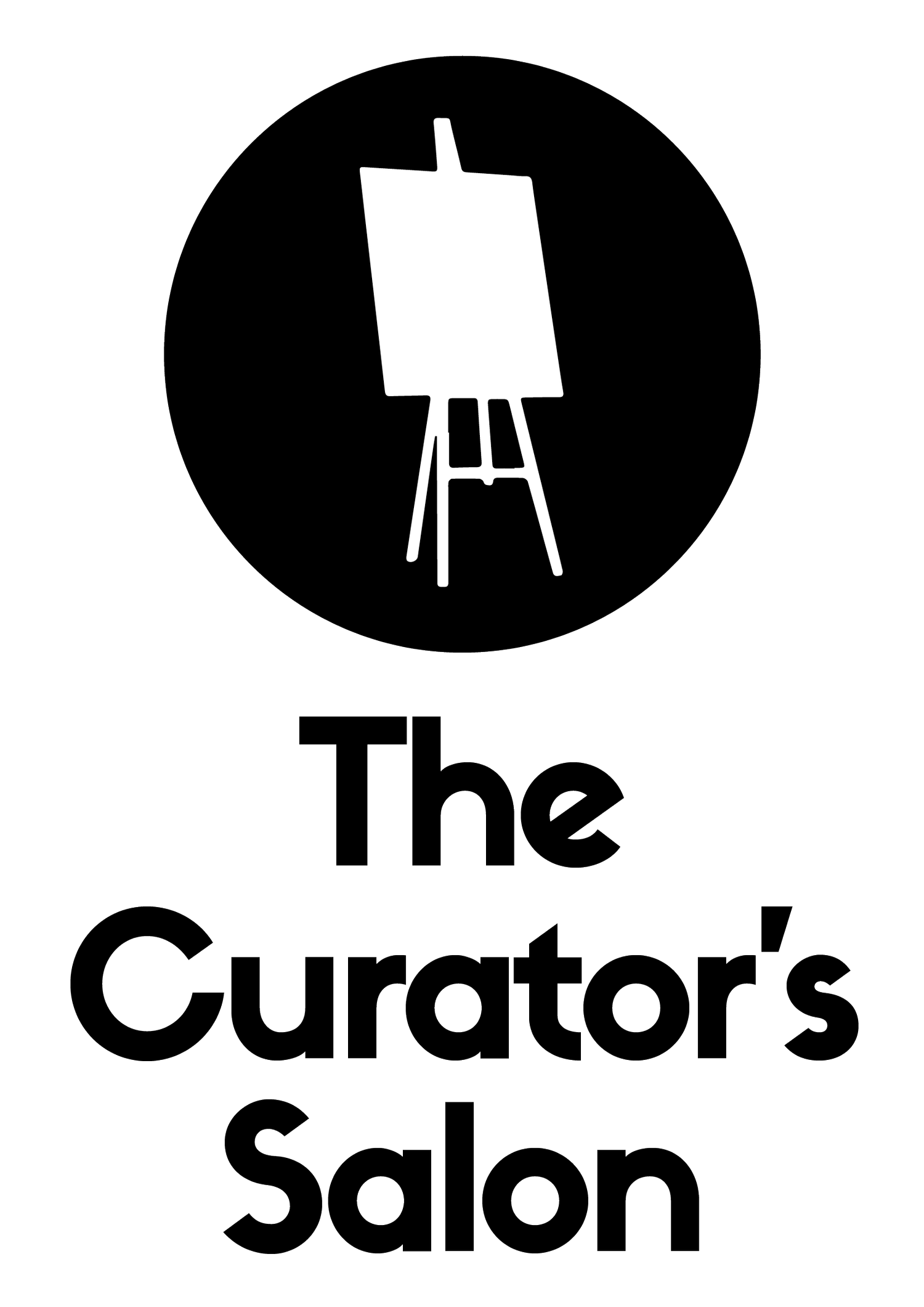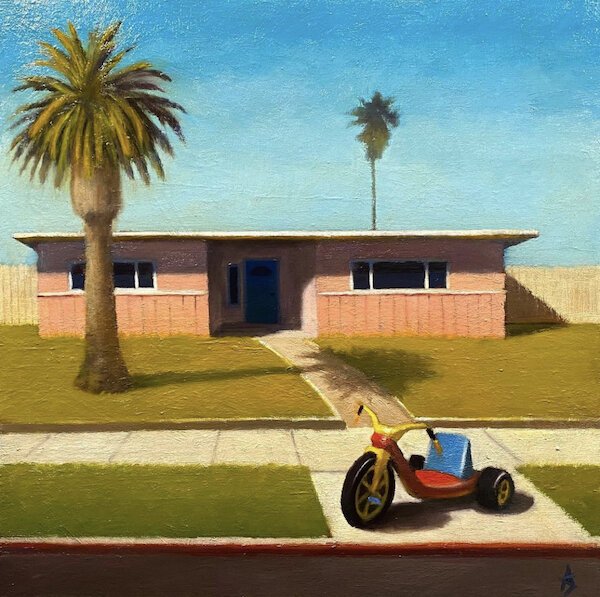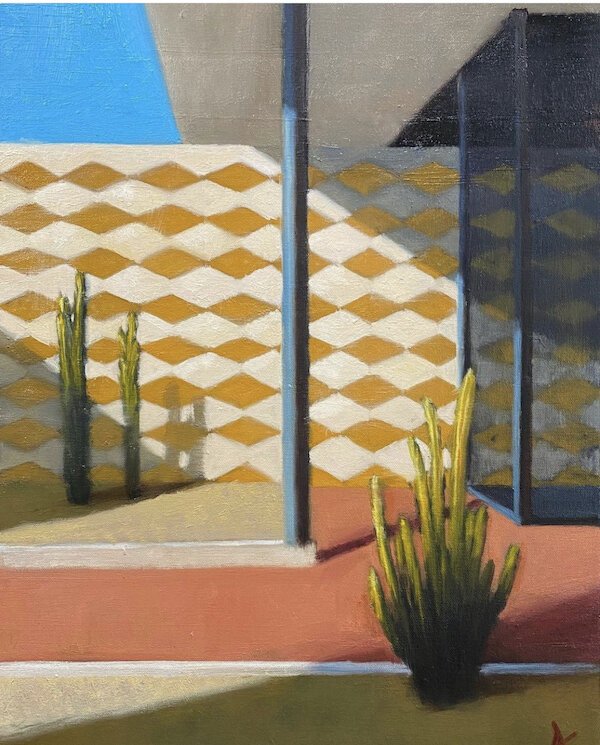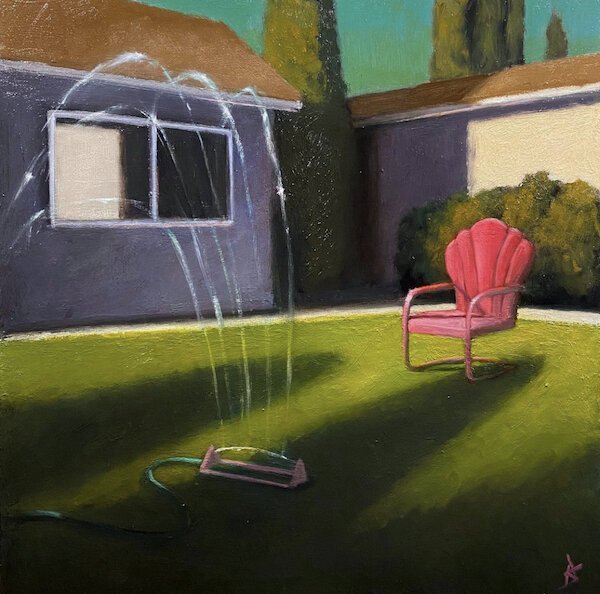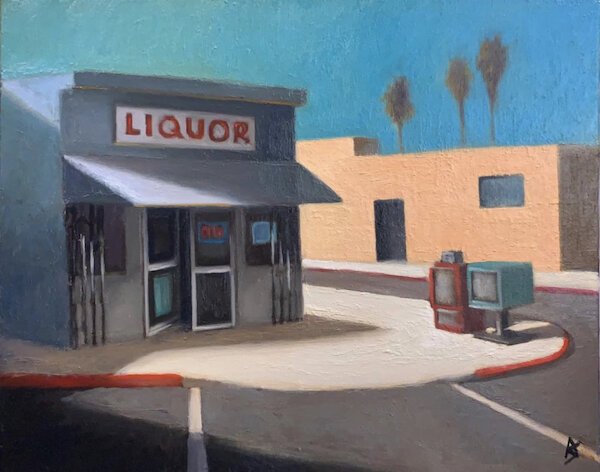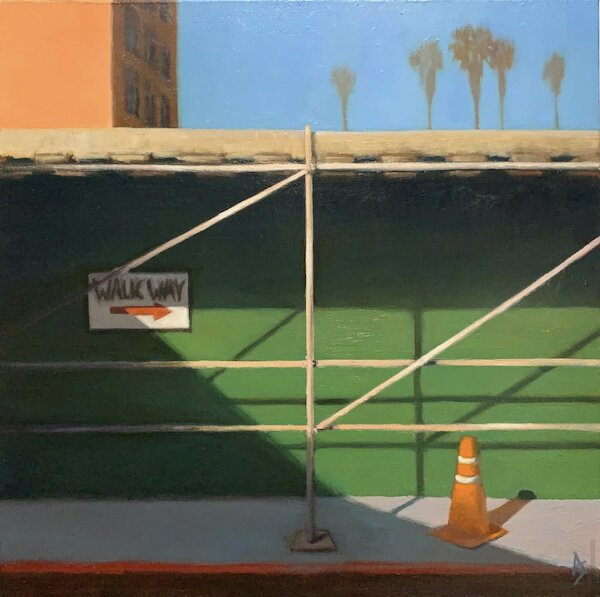Alex Selkowitz
I caught up with California-based artist Alex Selkowitz to talk about his work and career.
Tell me a little bit about your background. How did you come to be an artist?
When I was kid, I spent many hours daydreaming and always had a very active imagination. I was obsessed with comic strips, cartoons and comic books and often I would copy or trace characters to see how they were “made”. I consumed as many movies, video games and anything that stimulated me visually. I often fantasized of drawing comic strips or working on movies some day. Fine art was not on my radar until later in life.
In my early twenties, I moved to Los Angeles, California where I began working on lighting crews for film and television. Over the years, this education of lighting and cinematography has helped hone my eye for light, shadow, and composition.
I discovered painting about 10 years ago and really fell in love with it. I never trained at an art school, so at the beginning, it was a very slow process filled with lots of frustration. I dabbled in watercolor and acrylics for a while, but once I found oil paint, I knew that it was the one for me.
For a number of years, I studied under a great painter Scott Yeskel. I still mentor under him and look to him for guidance. Over time, I have participated in some workshops as well. Watching videos, reading books, and simply putting the time and dedication in along the way have helped hone my craft as well.
What medium do you prefer? Why?
Oil paint is the medium of my choice. I like it because it is the most versatile of paints. It is slow drying, so I have time to adjust the paint after I lay it down. It can be chunky buttery paint or thin-downed washes. It’s messy and a pain to clean up sometimes, but I love it.
Tell me about some of the ideas you explore in your work. I often get the sense that someone just “walked off the set” in your pieces.
The idea that transcends throughout most of my work is calmness within a frenetic world. It stems from my own personal pursuit of wanting to feel calm and balanced in my own life. I suppose that, inevitably, it comes out in my artwork. Occasionally, I will imagine a painting that I am working on hanging on a wall somewhere and I think to myself, would this image cause me to stop whatever I am doing and reflect for a moment?
I attempt to make paintings that are timeless and not too specific. I occasionally sway towards surrealism or a dream-like quality. You might recognize a certain object or two, but there is nothing immediately striking that would “date” the painting.
What is your artistic process like?
I use a combination of info gathering: photos, notes and sketches. It can be as simple as just walking or driving somewhere and I’ll see something interesting and stop to take a picture of it. I might not think about the idea for months, and then as I am digging around one day, I will suddenly get an idea. I have even used a 3-D modeling program before to do a “mock up” of the scene. These are usually very crude -- I treat them like a three-dimensional sketch. For example, they can help me see how the shadow from a window might fall a certain way on a wall. The subjects of my paintings are often everyday scenes or objects around me in my life. This not only provides me with endless source material, but also the
challenge of painting them in a way that is interesting to me. Sometimes I put things in just like a set designer would so that they are the most effective for the composition.
I am always working on multiple paintings at once. I try to rotate through three at a time. That way, when I am finished working on one for the day, I let it dry and then I move to the next. It’s a never-ending process really.
Can you talk about the evolution of your practice? How did you arrive at the work you’re now known for?
It was a series of discoveries that led me to this current state of my practice. Looking at a number of artists I admire such as John Register or Richard Diebenkorn, I noticed that lots of their paintings had no figures in them. Yet they still spoke to me. When you work on a film set, there is a lot of time spent tweaking set dressing, lighting and camera composition to make the ideal frame. I began taking that idea and applying it to my painting process, adding and subtracting things as needed - sort of being my own set designer and director of photography.
The scenes that I create that really seem to work have a “the moment before” or “the moment after” quality to them. There is this sweet spot that is hard to hit but when it does, it conveys that feeling of stillness that I am after. Integrating my sense of lighting from spending years on set helps as well to construct an interesting composition and set a specific mood.
There is always a hint of humanity like a man-made object, but I like the viewer to be the dominant human presence most of the time. In my opinion, it allows for a greater sense of immersion in the painting and helps strengthen the emotional connection.
The Viewer series stemmed from the concept of an observer being observed. My wife and I had traveled a bit at the time and visited some wonderful museums. There were so many instances of people lost in the moment staring at some amazing artwork. In some cases, I found myself just as entranced with the people as I was with the artwork. I took some photos and started playing around with compositions. Painting people is not my forte, but I really wanted to push myself.
Which artists do you look to for inspiration?
I look to Edward Hopper, John Register, Richard Diebenkorn, Wayne Thiebaud, Raymonds Straipans.
Describe your studio - what’s it like?
It’s a mess! Well sort of... I have shelves full of paintings that I have made and I am always almost running out of room until I sell some more.
What is the most memorable thing someone has said about your work?
The adult children of one of my favorite painters of all time reached out to me and told me that my work reminded them of their father’s. That meant the world to me, it was a very profound moment. Several years ago, when I was at an art fair showing some of my work, a man came by and I actually saw him get goosebumps looking at my paintings. That was pretty amazing. In general, the comments that are most memorable are the ones where someone shares how a painting makes them feel
Follow Alex on Instagram at @Alex_Selkowitz_Painter
See more at his website https://www.alexselkowitz.com/
